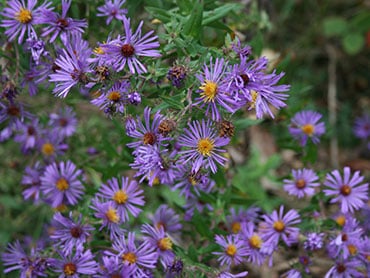After the greys, whites, and browns of the winter season, our eyes become hungry for the vibrant colours of spring. From pale violets, butter yellows, and glorious pinks to the many intense shades of green—spring is a feast for the eyes! You can capture some of this beauty by gently pounding coloured flowers and plants onto either paper or light-coloured cloth (e.g., T-shirts or handkerchiefs) to release their natural dyes.
EASY & FUN FAMILY ACTIVITY
What you’ll need:
- cloth or paper bags for harvesting
- scissors
- wooden plywood boards (or a hard surface like a picnic table that you don’t mind denting)
- a hammer
- paper towel
- watercolour paper and/or white cloth (like a handkerchief or T-shirt)
Please note: You’ll need adult supervision for this activity. Also, be sure you can identify any harmful plants that might be in your area such as poison oak, poison ivy, and giant hogweed.
How to do it:
Go for a walk and harvest various flowers and leaves that you know are safe to touch. You’re looking for plants and flowers that are “juicy” and not too dry. Examples include: dandelion flowers and leaves, clovers, violets, oak leaves
Place your cloth or watercolour paper on top of the hard wooden surface and artfully arrange a variety of flower heads and plants on the cloth/paper. Cover this with two or three layers of paper towel. Now, methodically and carefully (without hitting too hard) hammer the paper towel, making sure to hit each part of the plant hidden below. Begin by tapping gently so that the leaves and flowers are anchored in place. Then tap more firmly, navigating up and down and side to side. You’ll need to hit every single part of the plant, so be patient, it can take a while. Also, be careful that you don’t accidentally smack your fingers or thumb!
When you’re done hammering, gently peel away the paper towel and the plants. You should have a lovely imprint of your flowers and plants on the watercolour paper or cloth. Consider layering your creation by adding more plants—just make sure that you remove all the smashed material before you add another layer. You may need to experiment with a variety of flowers and plants to create the artwork you’re looking for. Then, stand back and admire your work and savour the beauty, textures, colours, and patterns of the natural world!
Important rules to follow:
- Take only a few leaves or flower heads from any one place.
- Don’t ever harvest anything that isn’t in abundance.
- Always take just a bit from here and a bit from there.
- Never take the first or the last.
- Always give thanks to the plant you are harvesting. Robin Wall Kimmerer calls this the “honourable harvest” in her wonderful book, Braiding Sweetgrass.

